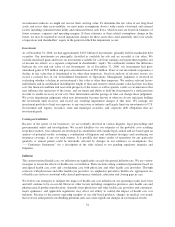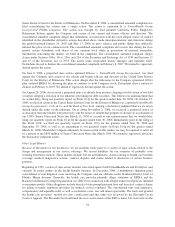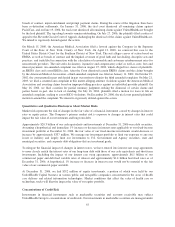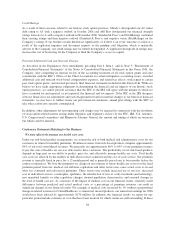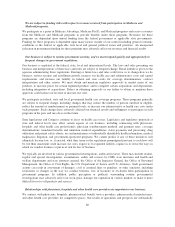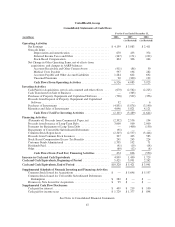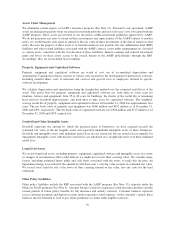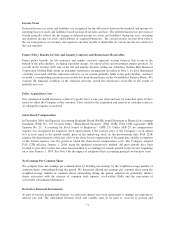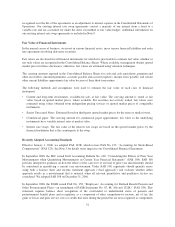United Healthcare 2006 Annual Report Download - page 64
Download and view the complete annual report
Please find page 64 of the 2006 United Healthcare annual report below. You can navigate through the pages in the report by either clicking on the pages listed below, or by using the keyword search tool below to find specific information within the annual report.Our businesses depend on effective information systems and the integrity of the data in our information
systems.
Our ability to adequately price our products and services, to provide effective and efficient service to our
customers, and to accurately report our financial results depends on the integrity of the data in our information
systems. As a result of technology initiatives, changes in our system platforms and integration of new business
acquisitions, we have been taking steps to consolidate the number of systems we operate and have upgraded and
expanded our information systems capabilities. If the information we rely upon to run our businesses were found
to be inaccurate or unreliable or if we fail to maintain our information systems and data integrity effectively, we
could lose existing customers, have difficulty attracting new customers, have problems in determining medical
cost estimates and establishing appropriate pricing, have disputes with customers, physicians and other health
care providers, have regulatory problems, have increases in operating expenses or suffer other adverse
consequences. In addition, failure to consolidate our systems successfully could result in higher than expected
costs and diversion of management’s time and energy, which could materially impact our business, financial
condition and operating results.
The value of our intangible assets may become impaired.
Due largely to our recent acquisitions, goodwill and other intangible assets represent a substantial portion of our
assets. Goodwill and other intangible assets were approximately $18.7 billion as of December 31, 2006,
representing approximately 40% of our total assets. If we make additional acquisitions it is likely that we will
record additional intangible assets on our books. We periodically evaluate our goodwill and other intangible
assets to determine whether all or a portion of their carrying values may no longer be recoverable, in which case
a charge to earnings may be necessary. Any future evaluations requiring an asset impairment of our goodwill and
other intangible assets could materially affect our results of operations and shareholders’ equity in the period in
which the impairment occurs. A material decrease in shareholders’ equity could, in turn, negatively impact our
debt ratings or potentially impact our compliance with existing debt covenants.
Our knowledge and information-related businesses depend on our ability to maintain proprietary rights to
our databases and related products.
We rely on our agreements with customers, confidentiality agreements with employees, and our trade secrets,
copyrights and patents to protect our proprietary rights. These legal protections and precautions may not prevent
misappropriation of our proprietary information. In addition, substantial litigation regarding intellectual property
rights exists in the software industry, and we expect software products to be increasingly subject to third-party
infringement claims as the number of products and competitors in this industry segment grows. Such litigation
and misappropriation of our proprietary information could hinder our ability to market and sell products and
services.
We must comply with restrictions on patient privacy and information security, including taking steps to
ensure that our business associates who obtain access to sensitive patient information maintain its
confidentiality.
The use of individually identifiable data by our businesses is regulated at the international, federal and state
levels. These laws and rules are changed frequently by legislation or administrative interpretation. Various state
laws address the use and disclosure of individually identifiable health data. Most are derived from the privacy
and security provisions in the federal Gramm-Leach-Bliley Act and the Health Insurance Portability and
Accountability Act of 1996 (HIPAA). HIPAA also requires that we impose privacy and security requirements on
our business associates (as this term is defined in the HIPAA regulations). Even though we provide for
appropriate protections through our contracts with our business associates, we still have limited control over their
actions and practices. Compliance with these proposals, requirements, and new regulations may result in cost
increases due to necessary systems changes, the development of new administrative processes, and the effects of
potential noncompliance by our business associates. They also may impose further restrictions on our use of
patient identifiable data that is housed in one or more of our administrative databases.
62


